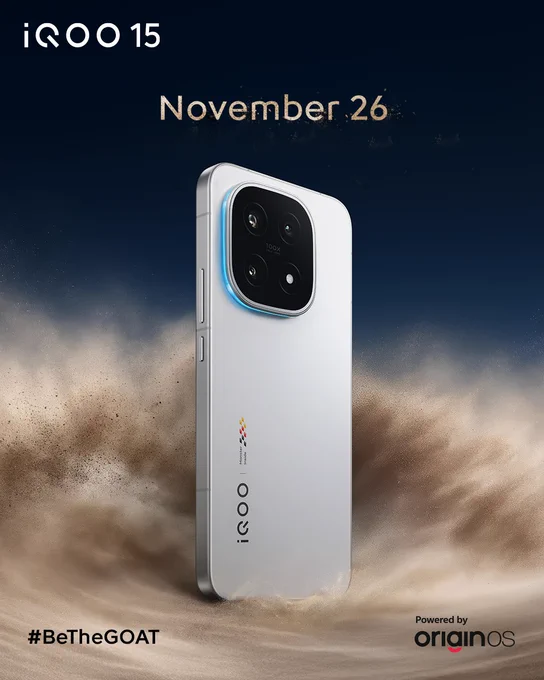techy , intersted in mobile technology.. wana know about everything.. follow for following.. #stufflistingsarmy
Joined January 2023
- Tweets 14,152
- Following 147
- Followers 38
- Likes 13,653
Pinned Tweet
I love it's form factors and its battery
#Giveaway #OPPOF31Series
#SmoothAndPowerful #TechnologyGyan
We’re giving away 2x #OPPOF31ProPlus 5G phones to 2 lucky winners! 🚀
How to Enter ⬇️
1. Follow me @ManojSaru
2. Retweet this post
3. Comment 1 thing you love about this phone
4. Pin this tweet to your profile 📌 until the winner is announced.📌
🏆 Winners via Random Comment Picker!
#Giveaway #OPPOF31Series
#SmoothAndPowerful #TechnologyGyan
MICKY retweeted
💩 Constipation : The Complete Clinical Guide
Constipation is more than “not going.” It’s a symptom, a syndrome, and often a signal of deeper disease. Let’s understand it from basics to advanced management 👇
🧠 Definition:
➡️ Textbook: Fewer than 3 bowel movements per week
➡️ Practical: Any change from normal pattern causing discomfort like straining, hard stool, or incomplete evacuation
🎯 Always identify the reason before starting laxatives.
🔍 Think LMNOP to remember causes:
L (Lifestyle):
Immobility, low fiber diet, poor hydration. Even light walking can stimulate bowel movement.
M (Metabolic):
Hypercalcemia slows gut and dehydrates, hypokalemia impairs muscle function, hypomagnesemia causes spasm, hypothyroidism slows transit (TSH >10).
N (Neurologic):
Seen in Parkinson’s disease, multiple sclerosis, dementia, spinal cord injury — these patients often need regular bowel regimens.
O (Obstructive):
Colon cancer, fissures, or strictures. Always rule out bleeding, weight loss, or new-onset constipation after age 50.
P (Pharmacologic):
Tricyclic antidepressants, calcium channel blockers, antipsychotics, antispasmodics, GLP-1 analogues, iron, calcium, and aluminum antacids.
💊 Don’t forget over-the-counter drugs like antihistamines, which are frequent hidden causes.
🥦 Non-Pharmacologic Management
Fiber:
Soluble fiber (psyllium, oats, methylcellulose) softens stool by retaining water.
Insoluble fiber (bran) can worsen bloating.
Start with 3–4 g/day and titrate to 20–30 g/day.
⚠️ Take with adequate water or it can worsen constipation.
💊 Psyllium should be taken 2 hours apart from thyroid or mineral supplements.
Hydration:
1.5–2 L/day is adequate; more adds little benefit if already hydrated.
Dietary Aids:
Prunes outperform psyllium in mild constipation.
Kiwi slightly increases stool frequency.
Physical Activity:
Even 15–20 minutes of daily walking improves motility.
💊 Pharmacologic Management
⚖️ Combine drugs with different mechanisms instead of repeating one type.
Osmotic Laxatives:
*Polyethylene Glycol (PEG) is safe, gentle, and works in 1–3 days.
*Magnesium citrate or oxide acts faster but is risky in renal dysfunction.
*Lactulose works in 1–2 days but can cause bloating and gas.
💡 Colonoscopy preps like GoLytely are high-dose PEG and can help in fecal impaction.
Stimulant Laxatives:
Senna or Bisacodyl act in 6–12 hours and are best taken at night for a morning bowel movement.
🌿 Chronic use doesn’t damage the colon or cause dependence.
🧴 Rectal Therapies (Suppositories and Enemas)
Suppositories dissolve in the rectum while enemas instill liquid to soften stool.
Lubricant (mineral oil) coats stool and bowel wall.
Osmotic (Fleet, glycerin, lactulose) pulls water into the rectum but avoid in CKD or elderly due to electrolyte imbalance.
Irritant (tap water or soap suds) promotes peristalsis by mild irritation.
👩⚕️ Enemas are labor-intensive and messy, plan them early in shifts.
💉 Opioid-Induced Constipation (OIC)
Opioids slow gut, tighten sphincters, and reduce secretions.
1️⃣ Adjust opioid formulation if possible (fentanyl patch less constipating than oral morphine).
2️⃣ Start osmotic and stimulant laxatives.
3️⃣ If refractory, use PAMORAs like Methylnaltrexone.
These block gut μ-opioid receptors without reversing pain control.
Work within ~1.3 hours.
Side effects include abdominal pain or diarrhea.
🩹 Stop other laxatives before starting PAMORA; restart if no relief.
🧩 Key Takeaways
✅ Always search for reversible causes using LMNOP.
✅ Avoid stacking drugs from the same class; combine logically.
✅ Soluble fiber and hydration are the foundation.
✅ Avoid phosphate enemas in CKD and elderly.
✅ For opioid users, PAMORAs can be lifesaving.
✅ Encourage movement and a fiber-rich diet to prevent recurrence.
#Constipation #GutHealth #InternalMedicine #USMLE #NEETPG #Gastroenterology #ResidentLife #MedTwitter #EvidenceBasedMedicine
MICKY retweeted
Upcoming smartphone launches:
1. OnePlus 15
2. realme GT8 Pro
3. OPPO Find X9 series
4. iQOO 15
5. vivo X300 series
6. Lava Agni 4
Which giveaway are you the most excited about? 😎
MICKY retweeted
Alright then.
600 likes and I'll definitely giveaway the iQOO 15 😍
Quote repost with #iQOO15 #BetheGOAT
MICKY retweeted
And, which color variant of the iQOO 15 would you want me to giveaway? 🤩
A. Legend
B. Alpha
#iQOO15 #BetheGOAT
MICKY retweeted
Finally, coming back to India today 😍
Have brought plenty of stuff for the #stufflistingsarmy as well, so be ready 🤩
And sorry for being unavailable, will get some rest today and will be back in action from tomorrow onwards ❤️
MICKY retweeted
Two finishes, two attitudes - Lunar Mist or Phantom Black.
Which one is your pick?
Launching on 20.11.25 🔥🔥🔥🔥
#Agni4 #ComingSoon #LavaMobiles
MICKY retweeted
Offline store guy said, Lava achha bik jata hai udhar.
Under 20k would be a good price..
Under 25k, too much competition.
MICKY retweeted
moto g67 Power launching on November 5th in India.
- 50MP LYT-600
- 7000mAh battery
- Snapdragon 7s Gen 2






































